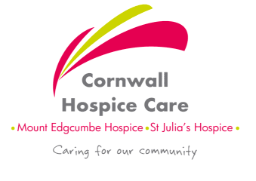- Professional Development
- Medicine & Nursing
- Arts & Crafts
- Health & Wellbeing
- Personal Development
Definitive Ethernet switching course description A hands on comprehensive look at Ethernet switches with extensive coverage of VLANs. The course focuses on the technology and not any one manufacturers product enabling delegates to configure switches from any manufacturer. What will you learn Configure and troubleshoot switches using: Console port telnet HTTP TFTP Configure and troubleshoot switch features such as: Duplex/speed Port based MAC security Spanning Tree Link aggregation Tagged ports Configure and troubleshoot VLANs. Definitive Ethernet switching course details Who will benefit: Technical staff. Prerequisites: Intro to data communications & networking. Duration 3 days Definitive Ethernet switching course contents What is Ethernet? LANs, network cards and cables, CSMA/CD, Ethernet frames, Ethernet evolution, 802.3. Hands on: ping, Ethernet speeds, CSMA/CD. Ethernet layer 2 Layer 2 functions, NICs, MAC addresses, unicasts, multicasts and broadcasts, frame formats. Hands on: Configuring NICs, Analysing MAC addresses with Wireshark IP and Ethernet Relationship Hands on: ARP. What is a switch? Switches connect multiple devices, switches versus hubs, simultaneous conversations, switches work at layer 2, the forwarding database, how the forwarding database is built, broadcast and collision domains Hands on: Difference between hubs and switches. Switch configuration Switch configuration Managed/unmanaged switches, configuration methods, reasons to configure switches. Console ports, HyperTerminal (and alternatives). Hands on: Using the console port to troubleshoot and configure switches. Switches in more detail Latency, forwarding mechanisms, switch fabrics. Hands on: Using telnet and HTTP to switches. Ethernet extensions Auto negotiation, Power over Ethernet. Hands on:Configuring and troubleshooting switch ports: Speed, duplex and security. Redundant links Loops, broadcast storms, STP, BPDU format, STP convergence. Hands on: Tracking blocked ports. STP convergence. Backbone links Architectures, link aggregation, LACP, load sharing, resilience. Hands on: fail over times. VLANs Virtual versus physical LANs, Why have VLANs? Broadcast domains, Creating VLANs, Assigning ports to VLANs. Hands on: Analysing the effect of VLANs on traffic. Enterprise VLANs VLANS are internal, multiple VLANs, Load balancing, Default VLAN, VLAN registration protocols: VTP, GVRP, MVRP. Hands on: VLANs on multiple switches. Tagging/Trunking Reason for tagging, terminology, tagging process, 802.1Q, Tag format, VLAN stacking. Hands on: Configuring and troubleshooting tags. STP variants RSTP, Common STP, Multiple STP, PVST, ring alternatives. Hands on: RSTP. Inter VLANs Layer 3 switching, IP addressing rules, Interconnecting VLANs. Hands on: Routing between VLANs. Troubleshooting Ethernet Methods, tools, locating faults, layer 1 issues, layer 2 issues Hands on: Fixing the network.

TEMA & HTRI Heat Exchanger Design & Cost Saving Management – Virtual Instructor Led Training (VILT)
By EnergyEdge - Training for a Sustainable Energy Future
Acquire in-depth knowledge of heat exchanger design and cost-saving management with EnergyEdge's TEM & HTRI course. Join our virtual instructor-led training to stay ahead in the industry.

CERTIFICATE IN REMOVING NON-HAZARDOUS WASTES (CONSTRUCTION)
By Oscar Onsite
REFERENCE CODE 603/2369/3 COURSE LEVEL NVQ Level 2 THIS COURSE IS AVAILABLE IN Course Overview This qualification is aimed at those who have responsibility for sorting, storing and removing non-hazardous wastes related to Construction work. Examples of the types of non-hazardous wastes covered by this qualification include rubble, timber, metal, cardboard or paper, plastics, fabrics and glass. All work must be completed following Industry recognized Safe Working Practices and in accordance with relevant legislation. This qualification is at Level 2, although some units may be at different levels and should be taken by those who are fully trained to deal with routine assignments. Candidates should require minimum supervision in undertaking the job. The qualification has been developed in a way to allow employees from companies of all sizes and specialisms equal opportunity to complete.

CNC Craft Maker Space
By CNC Craft Digital Technology Hub
Attending a Maker Space session will give you an informal and enjoyable introduction to Computer Aided Design and Digital Manufacturing. We use only open source design software, that you can download and use at home for free. We have 3D Printers, a CNC Router, a Laser-cutter, a digital embroidery machine, and a 3D scanner, and all of them are available for you to use. Small groups and expert tuition ensures everybody leaves with something they have designed and made. For more information go to https://cnccraft.co.uk/digital-fabrication/maker-space/. We look forward to seeing you here one Saturday. Aaron

Bookbinding Workshop
By Three Little Pigs Craft Workshops
Join us for this fascinating workshop and learn the skills required to make your very own book, a journal.

Educators matching "Fabric"
Show all 1Search By Location
- Fabric Courses in London
- Fabric Courses in Birmingham
- Fabric Courses in Glasgow
- Fabric Courses in Liverpool
- Fabric Courses in Bristol
- Fabric Courses in Manchester
- Fabric Courses in Sheffield
- Fabric Courses in Leeds
- Fabric Courses in Edinburgh
- Fabric Courses in Leicester
- Fabric Courses in Coventry
- Fabric Courses in Bradford
- Fabric Courses in Cardiff
- Fabric Courses in Belfast
- Fabric Courses in Nottingham

